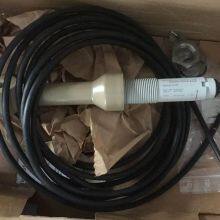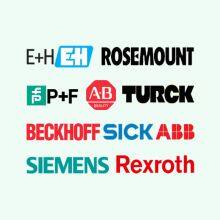The Future Trajectory of Rosemount Conductivity Transmitters: Innovation, Applications, and Market Dynamics
Introduction
In the realm of industrial process control, conductivity transmitters serve as critical sensors for monitoring liquid conductivity across diverse applications, including water treatment, chemical processing, and power generation. Among the leading players in this field, Rosemount (a brand of Emerson Process Management) has established a reputation for precision, reliability, and technological innovation. This article explores the development directions of Rosemount conductivity transmitters, examining their technical advancements, market applications, and future trends in the context of global industrial automation.
Technical Evolution and Innovation
Rosemount conductivity transmitters have evolved significantly since their introduction, driven by advancements in sensor technology, signal processing, and materials science. Key innovations include:
1. Electromagnetic Induction Principle
At the core of Rosemount's technology lies the electromagnetic induction method. By passing an alternating current through a coil, a magnetic field is generated, inducing eddy currents in conductive fluids. The resulting secondary magnetic field is detected by a secondary coil, with the amplitude proportional to the fluid's conductivity. This principle ensures high accuracy (±0.5% of full scale) and stability, particularly in harsh environments with high temperatures or corrosive chemicals.
2. Smart Features and Digital Integration
Self-Diagnostics and Calibration: Built-in diagnostic systems monitor sensor health, signal integrity, and environmental conditions, enabling predictive maintenance. Automatic calibration using reference solutions reduces manual intervention.
Communication Protocols: Compatibility with HART, Foundation Fieldbus, and other industrial protocols facilitates seamless integration with DCS/SCADA systems for real-time data analytics.
3. Material Durability
Sensors are constructed with corrosion-resistant materials (e.g., titanium, Hastelloy) to withstand aggressive fluids in chemical and power plants. Advanced coatings and sealing technologies enhance longevity in high-pressure/temperature environments.
Competitive Edge
Rosemount's market leadership stems from:
Precision and Stability: Superior performance in low-conductivity (e.g., deionized water) and high-conductivity (e.g., concentrated brines) fluids.
Multi-Parameter Capabilities: High-end models integrate temperature, pH, and dissolved oxygen measurements, reducing the need for separate sensors.
Global Service Network: Emerson's extensive support infrastructure ensures rapid calibration, repair, and technical assistance across regions.
Future Trends and Challenges
The conductivity transmitter market is poised for growth, driven by industrial digitization and sustainability imperatives. Key trends shaping Rosemount's development include:
1. Enhanced Precision and IoT Integration
Machine Learning Algorithms: Optimizing sensor calibration curves for non-linear conductivity responses.
Cloud Connectivity: Transmitting data to remote platforms for advanced analytics, enabling predictive maintenance and process optimization.
2. Sustainability and Energy Efficiency
Low-Power Sensors: Reducing energy consumption in battery-powered or remote installations.
Circular Economy: Designing recyclable sensors and modular components to minimize electronic waste.
Conclusion
Rosemount conductivity transmitters exemplify excellence in industrial sensing, combining robust electromagnetic technology with smart digital features. Their versatility across water treatment, chemicals, power, and pharmaceuticals underscores their strategic value. Looking ahead, Rosemount must prioritize IoT integration, energy efficiency, and multi-parameter sensing to sustain its market leadership. As global industrial automation advances, the company's ability to innovate in precision, connectivity, and sustainability will define its trajectory in the decades to come.

Send Inquiry to This Supplier
You May Also Like
-
ABB Coriolis Mass FlowmetersNegotiableMOQ: 1 Unit
-
ABB Electromagnetic FlowmetersNegotiableMOQ: 1 Unit
-
ABB Vortex FlowmetersNegotiableMOQ: 1 Unit
-
ABB Thermal Mass FlowmetersNegotiableMOQ: 1 Unit
-
Siemens FlowmetersNegotiableMOQ: 1 Unit
-
Siemens Electromagnetic FlowmetersNegotiableMOQ: 1 Unit
-
Siemens Vortex FlowmetersNegotiableMOQ: 1 Unit
-
Siemens Ultrasonic FlowmetersNegotiableMOQ: 1 Unit
-
Siemens Coriolis Mass FlowmetersNegotiableMOQ: 1 Unit
-
Krohne FlowmetersNegotiableMOQ: 1 Unit













